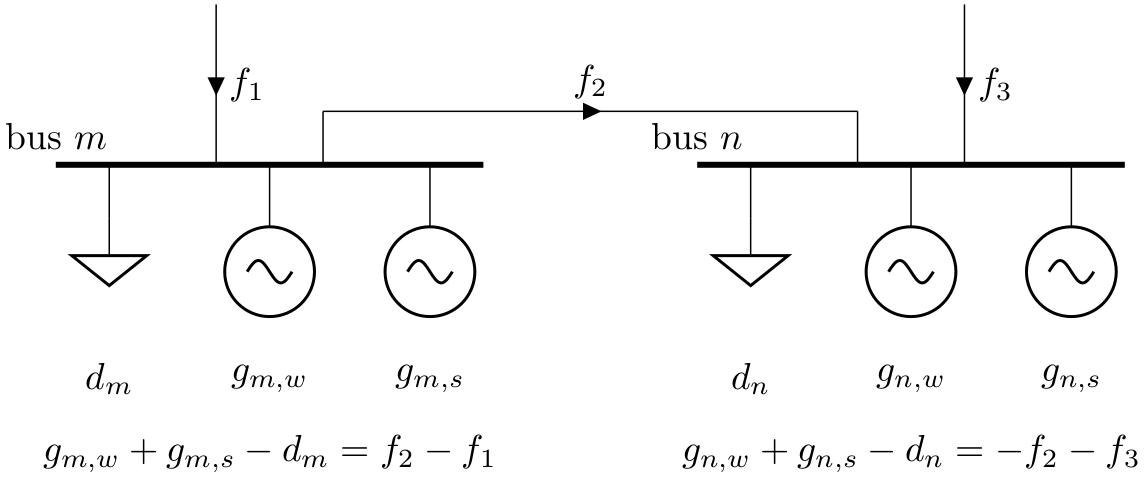PyPSA Introduction#
PyPSA stands for Python for Power System Analysis.
PyPSA is an open source Python package for simulating and optimising modern energy systems that include features such as
conventional generators with unit commitment (ramp-up, ramp-down, start-up, shut-down),
time-varying wind and solar generation,
energy storage with efficiency losses and inflow/spillage for hydroelectricity
coupling to other energy sectors (electricity, transport, heat, industry),
conversion between energy carriers (e.g. electricity to hydrogen),
transmission networks (AC, DC, other fuels)
PyPSA can be used for a variety of problem types (e.g. electricity market modelling, long-term investment planning, transmission network expansion planning), and is designed to scale well with large networks and long time series.
Compared to building power system by hand in linopy, PyPSA does the following things for you:
manage data inputs
build optimisation problem
communicate with the solver
retrieve and process optimisation results
manage data outputs
Major Dependencies#
pandasfor storing data about network components and time seriesnumpyandscipyfor linear algebra and sparse matrix calculationsmatplotlibandcartopyfor plotting on a mapnetworkxfor network calculationslinopyfor handling optimisation problems
Structure#
Component |
Description |
|---|---|
Container for all components. |
|
Node where components attach. |
|
Energy carrier or technology (e.g. electricity, hydrogen, gas, coal, oil, biomass, on-/offshore wind, solar). Can track properties such as specific carbon dioxide emissions or nice names and colors for plots. |
|
Energy consumer (e.g. electricity demand). |
|
Generator (e.g. power plant, wind turbine, PV panel). |
|
Power distribution and transmission lines (overhead and cables). |
|
Links connect two buses with controllable energy flow, direction-control and losses. They can be used to model:
|
|
Storage with fixed nominal energy-to-power ratio. |
|
Constraints affecting many components at once, such as emission limits. |
|
Storage with separately extendable energy capacity. |
|
not used in this course |
|
Standard line types. |
|
2-winding transformer. |
|
Standard types of 2-winding transformer. |
|
Shunt. |

Warning
Per unit values of voltage and impedance are used internally for network calculations. It is assumed internally that the base power is 1 MW.
Environment#
Google Colab#
You can run the examples without a local Python installation using Google Colab
(colab.google) which provide an online Python
environment. This requires a Google account. Click on the rocket in the top
right corner and launch “Colab”. If that doesn’t work download the .ipynb file
and import it in Google Colab.
conda#
The conda environment specification can be downloaded here:
Run
conda env create -f environment.yaml
Activate
conda activate gasunie
pip#
The pip environment specification can be downloaded here:
Run
pip install -r requirements.txt